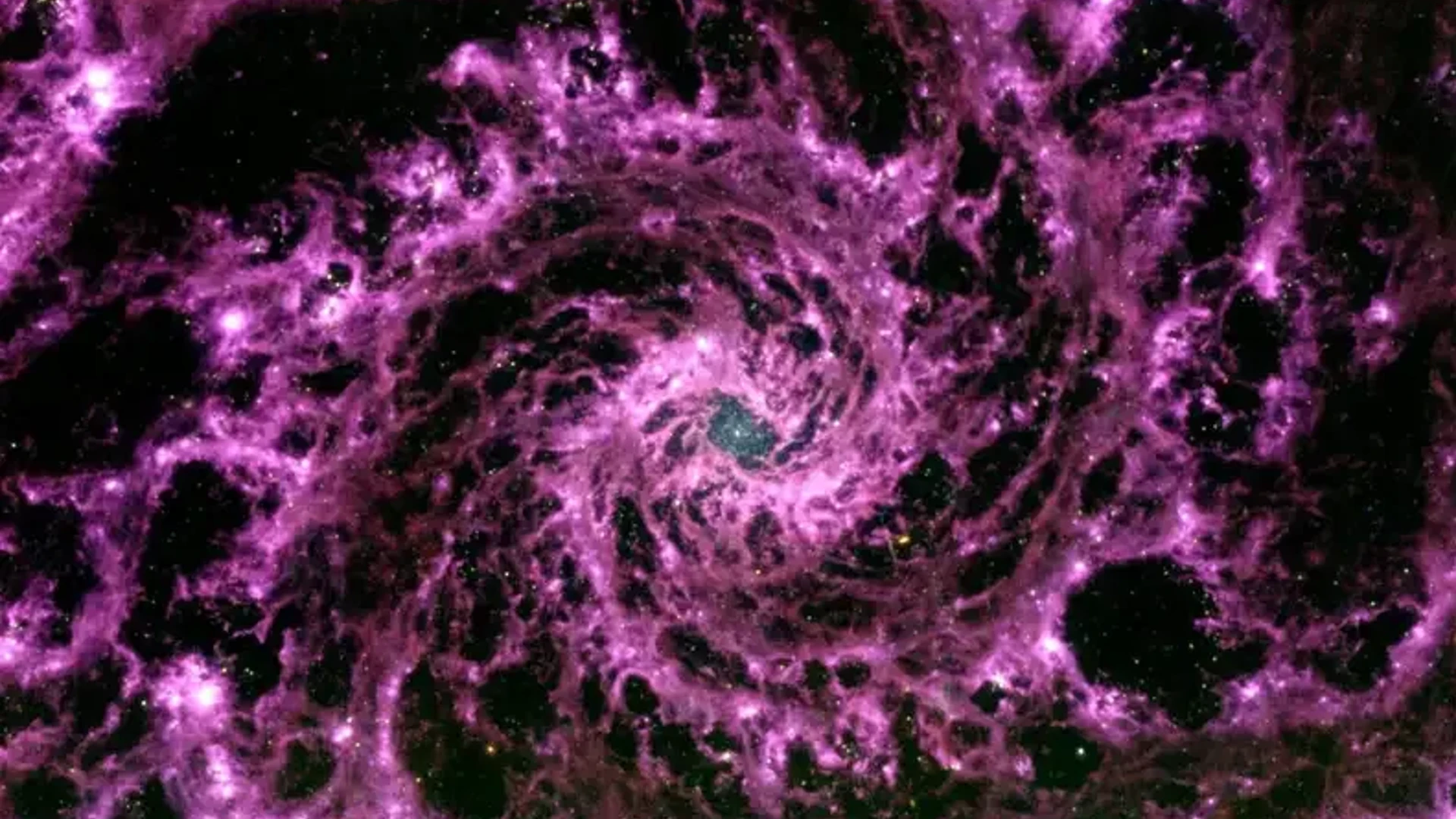James Webb Space Telescope images of the spiral galaxy NGC 628 look like they belong in a science fiction film, and may help researchers better understand how galaxy dust behaves.
JWST’s mid-infrared instrument team used three sets of data obtained at different wavelengths to create this image. Unrelated to the project, Gabriel Brammer at the University of Copenhagen in Denmark downloaded the data, converted each infrared wavelength to red, green, and blue, and then combined them to create one picture.
Let's just see what JWST observed yesterday…
Oh, good god. pic.twitter.com/8UQWi2zPlR— gbrammer (@gbrammer) July 18, 2022
A visible light image of the galaxy has previously been captured by other telescopes, including Hubble. From above the galactic plane, it even resembles the Milky Way. According to Brammer, the night sky would appear much more like this image “if human eyes could see in these mid-infrared wavelengths,” which he described as “amazing, maybe even a little alarming.”
Due to the makeup of its dust clouds, which are primarily made up of big molecules known as polycyclic aromatic hydrocarbons, NGC 628 appears purple in Brammer’s image (PAH).
These molecules reflect only certain wavelengths of light, so when Brammer converted the wavelength data to red, green, and blue, there wasn’t much green left. The galaxy’s purple hue comes from a mixture of a lot of red and blue light.
Cover Image: NASA/ Gabriel Brammer
